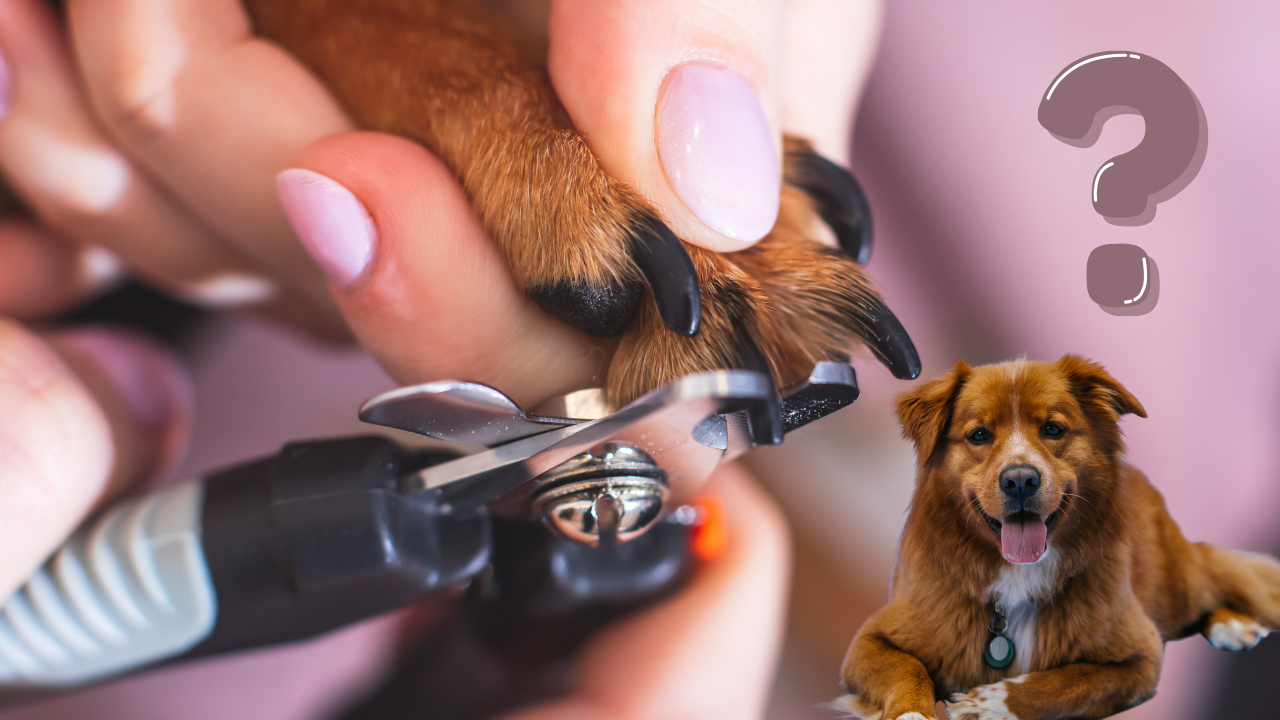When I first wondered how do you cut a dog’s black nails, I was overwhelmed. The fear of accidentally cutting into the quick, which can lead to bleeding, kept me hesitant. With about 40% of dog owners facing similar challenges, it’s essential to approach this task with the right knowledge and tools.
Trimming your dog’s nails is not just about aesthetics; it’s vital for their health. Regular trimming can prevent painful overgrowth, which affects around 25% of dogs. So, let’s make nail trimming a stress-free experience for both you and your furry friend!
Quick Navigation
Quick Look
To cut a dog’s black nails safely, gather quality nail clippers and styptic powder, trimming only 1/16 inch at a time to avoid the quick. It can also be helpful to use a flashlight to identify the quick, ensuring you’re cutting in a safe area. For more detailed guidance on this, take a look at the proper technique for cutting dog nails.
Can I use a nail grinder instead of clippers?
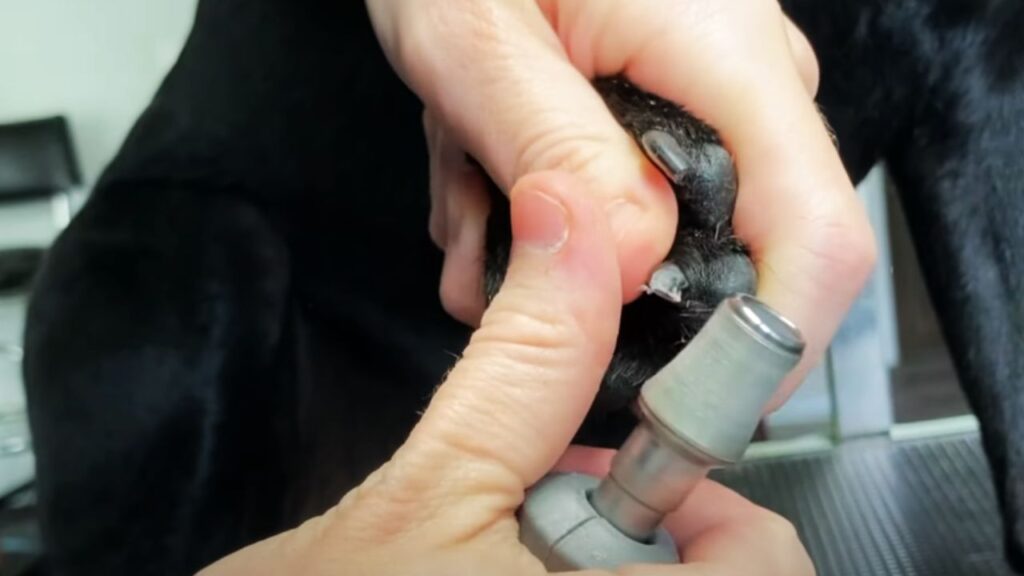
Yes, you can use a nail grinder instead of clippers. Nail grinders are a great alternative because they are typically quieter and can produce a smoother finish on the nails, which may be more comfortable for some dogs. However, keep in mind that it might take some time for your dog to adjust to the sound and sensation of the grinder
Dog Nail Anatomy
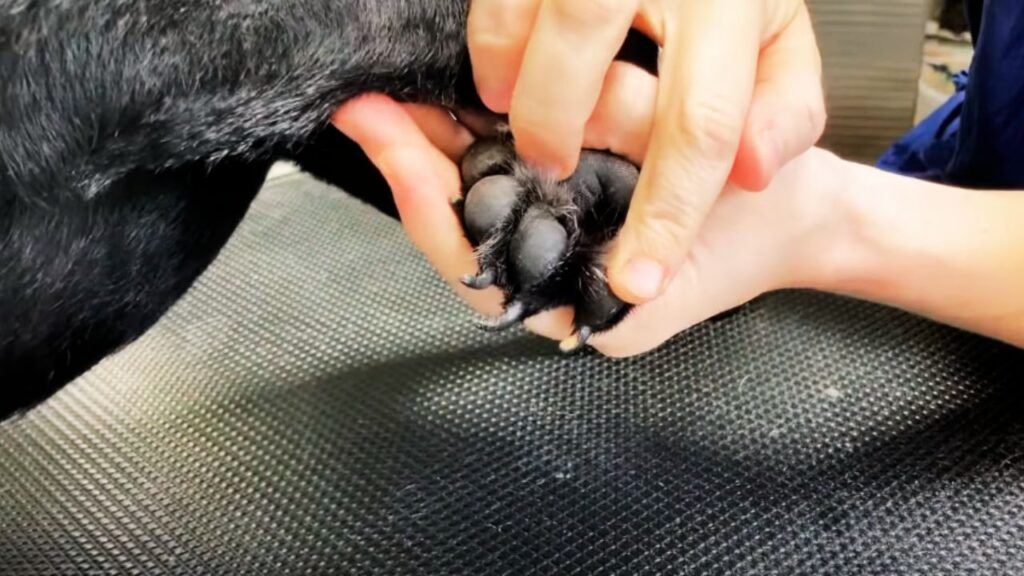
When I first started trimming my dog’s nails, I quickly learned that understanding nail anatomy is crucial. A dog’s nail consists of two main parts: the hard outer shell and the inner quick. The outer shell, made of keratin, is similar to our own fingernails, while the quick contains blood vessels and nerves.
The quick is sensitive and can cause pain if cut, which is why we need to be extra careful when trimming. Interestingly, about 40% of a dog’s nail structure is made up of the quick, making it vital to avoid this area. Since black nails obscure the quick, this task can be nerve-wracking for us dog parents.
Being aware of how to identify the quick is a game-changer. While lighter nails show a pinkish hue, black nails can make it nearly invisible. So, keeping this in mind helps reduce the chances of accidentally cutting into the quick, ensuring a safer trimming experience for you.
Looking for an effective antifungal solution? Check out our recommendations for the best antifungal shampoo for dogs.
Preparing for the Nail Trim
Before diving into how do you cut a dog’s black nails, I make sure to prepare thoroughly. This preparation not only helps me feel more confident but also ensures that my pup has a positive experience. Here’s how I set the stage for a successful nail-trimming session.
Gathering Your Tools
When it comes to trimming my dog’s black nails, preparation is key. I always gather my tools before starting—having the right equipment makes the process smoother and less stressful for both of us. For my pup, I typically need two types of clippers: scissor style and guillotine style, both of which are excellent for different nail sizes.
Essential Supplies
I also make sure to have styptic powder on hand, just in case I accidentally cut the quick. This powder is a lifesaver; it helps stop bleeding quickly and efficiently. I’ve learned that having this handy can ease my mind, especially when I’m working with black nails where it’s hard to see the quick.
Creating a Calm Environment
Next, I create a comfortable environment for my dog. A calm space is essential; I like to trim nails after a long walk when my pup is relaxed. Sometimes, having a second person around helps someone to hold my dog and provide treats can make all the difference in keeping him calm.
Positive Reinforcement
I also prepare some tasty treats to reward my dog during and after the trimming session. Keeping a positive vibe is crucial; studies show that rewarding good behavior can significantly reduce stress for pets. My goal is to make nail trimming a pleasant experience, so I use treats liberally think about 5-10 small bites throughout the process.
Setting Up for Success
By taking these steps, I not only set myself up for success but also ensure that my dog feels safe and cared for during what can be a stressful experience. Remember, preparation goes a long way in turning nail trimming from a dreaded chore into a manageable task!
Step-by-Step Guide: How Do You Cut a Dog’s Black Nails In 4 Steps

Let’s dive into the nitty-gritty of trimming those black nails! I’ll walk you through the process step by step, ensuring you and your pup have a safe and successful nail-trimming session.
Step 1: Positioning Your Dog
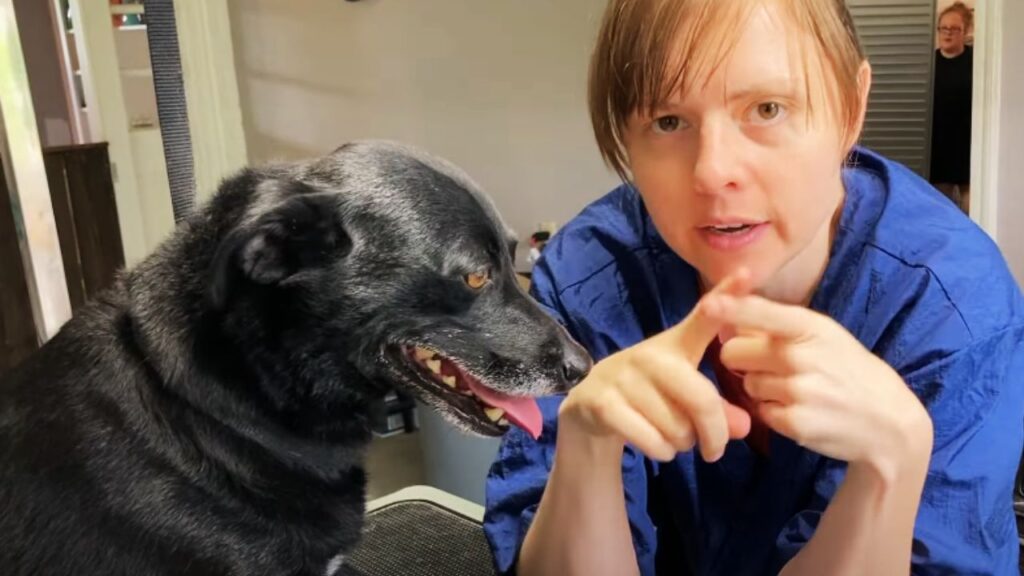
First things first, let’s talk about how to position your dog. I usually prefer to have my furry friend sitting or lying in front of me, so I have a direct view of their paws. If you can, enlist a helper to gently hold your dog, which makes the whole experience smoother and less stressful.
Step 2: Identifying the Quick
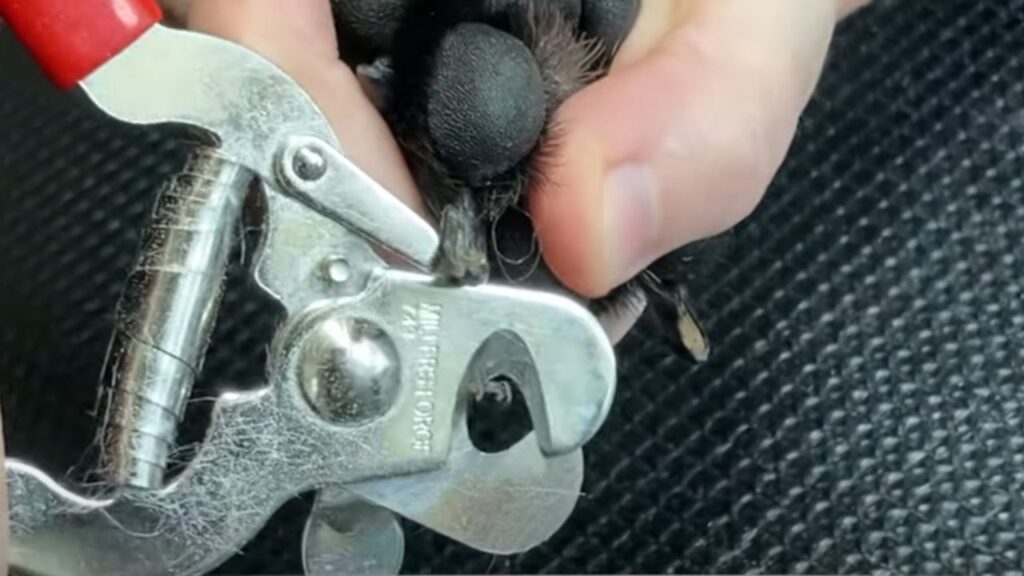
Now, identifying the quick is crucial when dealing with black nails. After making the first small cut (about 1/16 of an inch), look for color changes. If you see a white area, you’re safe, but if it starts to look black or even pink, you need to stop cutting right away.
Step 3: Trimming Technique
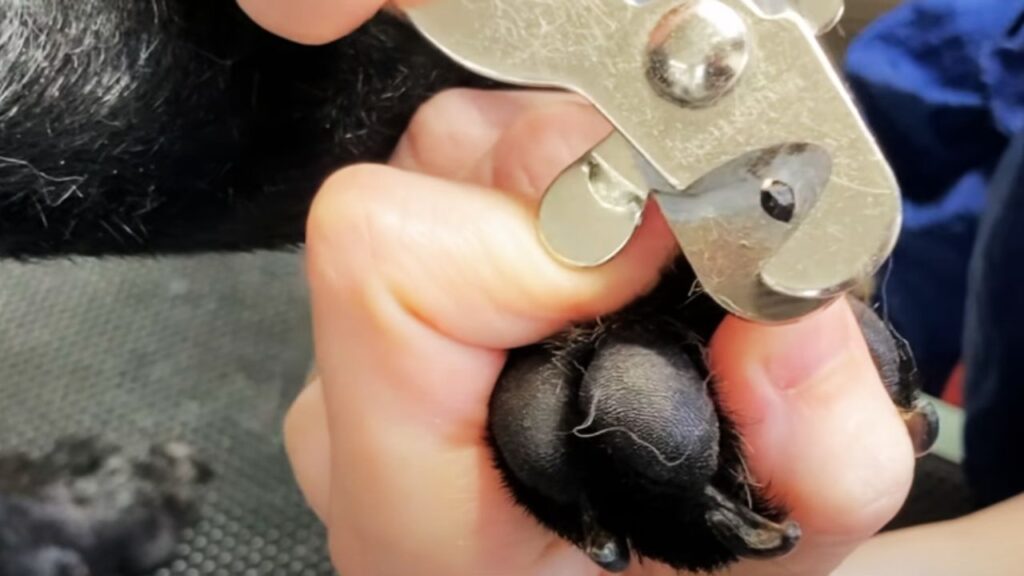
When it comes to trimming technique, always cut from top to bottom, not side to side. This approach helps prevent the nail from splitting and ensures a cleaner cut. I find it helpful to take my time and trim just a tiny bit at a time 1/16 of an inch at most.
Step 4: Signs to Stop
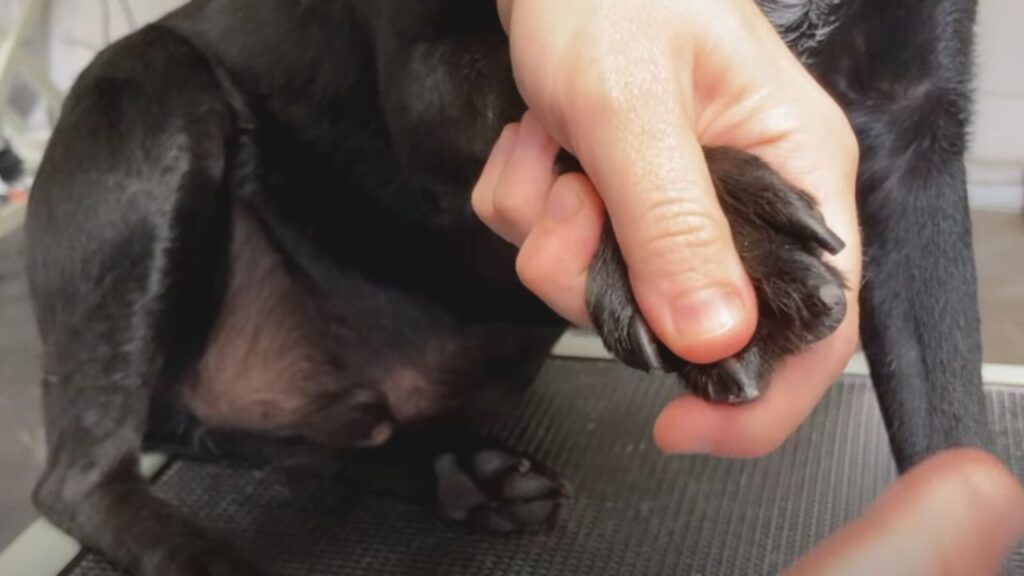
As you trim, keep an eye on the color of the nail. If you see a small black dot appearing at the center, that’s a sign you’re getting close to the quick. Remember, patience is key stopping when you see the black or pink will save you from causing your dog pain.
Handling Accidents
Accidents can happen to the best of us, especially when trimming our dog’s nails. If you accidentally cut the quick, don’t panic. The first thing I do is keep my dog calm by speaking softly and reassuring them.
Next, I grab the styptic powder it’s a lifesaver! Just sprinkle a little on the bleeding nail, and it usually stops the bleeding within 10 seconds. If you don’t have styptic powder, cornstarch works in a pinch, though it might take a bit longer to clot.
I also apply gentle pressure with a clean cloth to help stop the bleeding. Keeping my dog relaxed during this process is key, as stress can make the situation worse. I often give them treats and praise as they calm down, reinforcing positive behavior during what could be a stressful moment.
It’s crucial to remember that if the bleeding doesn’t stop within 5 minutes, you should consult your veterinarian. They can provide further assistance and ensure your dog is okay. With these tips in mind, I find that I can handle most minor mishaps effectively!
Post-Trimming Care
After trimming my dog’s nails, the care I give afterward is crucial for his comfort. This phase not only reinforces positive associations but also addresses any potential mishaps. A little attention goes a long way in making future grooming sessions stress-free.
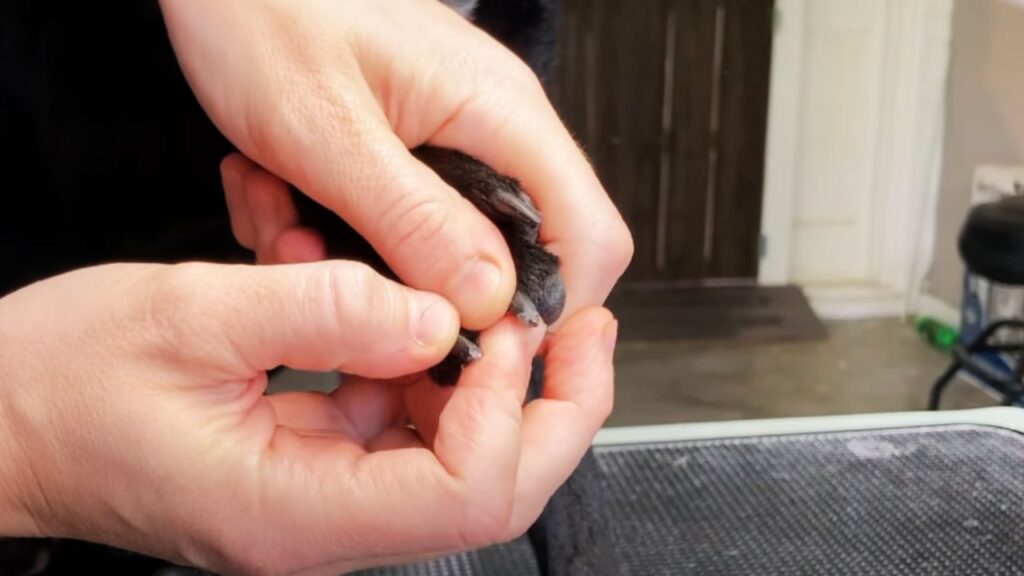
Rewarding Your Dog
Once I’ve finished trimming my dog’s nails, I always make sure to reward him. Positive reinforcement is key, so I grab some treats right after each nail cut. This simple act helps him associate nail trimming with good things, making future sessions smoother.
Establishing a Routine
I usually stick to a routine of trimming my dog’s nails every 3 to 4 weeks. Keeping up with this schedule prevents overgrowth and makes the process easier. Regular maintenance helps avoid those long, stressful sessions where I have to cut more than necessary.
Handling Accidents Calmly
If I accidentally cut the quick, I stay calm and handle the situation quickly. Applying styptic powder stops the bleeding almost instantly, which is a relief for both of us. I’ve found that this preparation minimizes stress and keeps my dog comfortable during the entire process.
Checking for Rough Edges
After trimming, I also check my dog’s paws for any rough edges or splinters. Using a nail file or grinder can smooth out any sharp spots that may have developed. This extra step ensures his paws are as healthy and comfortable as possible after a trim.
Bonding Time
Finally, I always take a moment to cuddle and give him some extra attention. This bonding time reinforces our trust and makes him feel secure. Plus, it turns out that spending just 10 to 15 minutes in a positive way can significantly reduce any anxiety he might feel about future trims.
Final Words
Trimming my dog’s black nails doesn’t have to be daunting. With the right tools like quality clippers and styptic powder—I’m equipped for success. By trimming a little at a time (about 1/16 inch), I’ve managed to keep my furry friend’s paws healthy and happy every 3-4 weeks. Remember, patience and practice go a long way, making this a positive experience for both of us!

